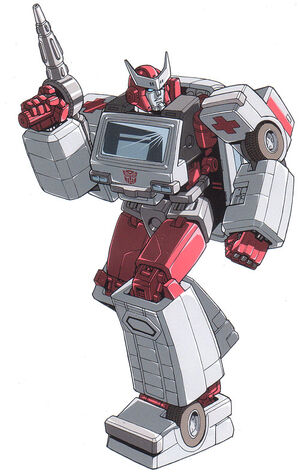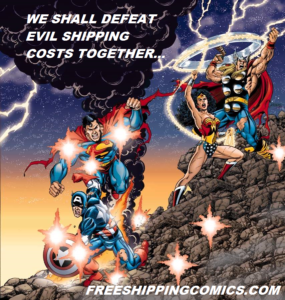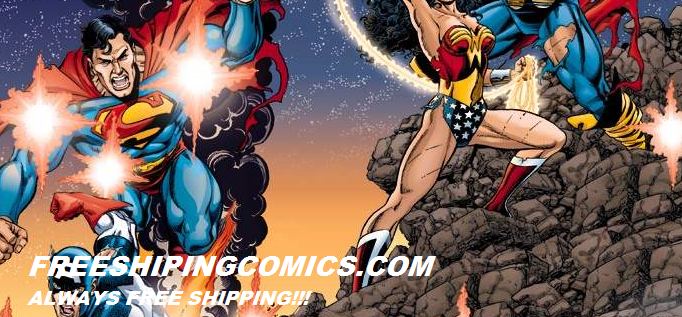Bob Budiansky has had a pretty good career. He was an accomplished penciller on Ghost Rider, created the character Sleepwalker, and served as editor on such titles as Daredevil, Fantastic Four, and the entire line of books starring a little known character named Spider-Man. He was responsible for a couple of significant initiatives bringing many (including myself) into comics. The first initiative of note was creating the wildly popular Marvel Trading Cards that so many others and I collected in the nineties. And in the eighties he was a significant architect of The Transformers, writing both the comics and biographies on the packages of the toys.

Can you talk about the politics of writing a toy comic book?
Most importantly, everything I wrote had to be approved by a representative of the toy company that owns the property, in this case Hasbro. As Hasbro rolled out new toys, I was asked to feature them in the comic book, which I did. I also kept in mind that the audience was for the Transformers toys as I wrote the stories. No one from Hasbro ever asked me to specifically write for boys of approximately the ages of 6-12, but common sense dictated that was the group to whom the toys were being primarily marketed, and so I fashioned stories that I thought would have appeal to that group.

How far in advance were you informed about new characters?
I don’t exactly remember. I would typically get model sheets and very brief descriptions of upcoming new toys many months in advance, maybe half a year or more, so I could name them and write packaging copy for them because this information would have to be ready in time to go on the actual toy packages. This schedule would also typically allow me enough lead-time to feature the new characters in the comic book to coincide with the release of the new toys.
Who had the first opportunity to name and develop the characters backgrounds, you or the cartoon staff? How close was the communication? Was there ever an attempt to bring the show and comic in line?
I’m fairly certain Marvel was approached first by Hasbro to develop the characters and Transformers back-story. I wasn’t involved in the communications between Hasbro and Sunbow, the animation company that produced the cartoon, so I can’t say exactly when they were involved in the process. But I can say as things went forward for the first five years of Transformers, Hasbro worked with Marvel, mostly directly with me, to further develop the line, with the exception of the animated movie that was released in 1986. Marvel was not involved with the characters developed for the movie. As for communication, I worked closely with different Hasbro product managers over the years of my involvement with Transformers. There was a constant flow of information back and forth between Hasbro and me–I would send out character names, character profiles, comic book plots and scripts, and Hasbro would send back their approvals, comments, and information about upcoming new toys for me to develop. I also attended many meetings at Hasbro headquarters in Rhode Island, and visited Hasbro’s exhibitions at the annual toy conventions in New York City, all for the purpose of seeing the new lines of Transformers that would soon be coming out. Hasbro was very good at keeping me up-to-date on its plans for Transformers. As for the cartoon show and the comic book, I believe the show went in a different direction from the comic book after Season One. I remember having a brief conversation with some Hasbro executives about whether I wanted the comic book to follow the show’s new direction. I said I didn’t and they were fine with that.
In previous interviews you said the mandate to introduce new toys wrecked havoc with your stories. Do you remember any specific instances or have any stories that couldn’t be told because of toy mandates?
Sorry, it’s all a blur. Basically, I found myself on a few occasions developing certain characters and then having to put them aside because I had to introduce a slew of new characters. But I don’t remember specifics of whom I had to cast aside or stories I wanted to tell but couldn’t.

Why didn’t you use the movie characters in the comic? How did Hasbro react to you not using those characters?
The movie characters were specifically developed for the movie, which took place in the future. So the movie characters didn’t fit the comic book’s timeline. It’s possible I pointed this out to the Hasbro folks, and they accepted that as a reasonable explanation for leaving the movie characters out of the regular comic book. Besides, there was no shortage of other new Transformers toys to introduce into the comic book.
Were you informed about the events of the movie ahead of time?
I edited the Marvel adaptation of the movie, so I’m certain we had a script and probably a pre-release video or stills of the movie so that we could produce the comic book to coincide with the release of the movie.
Did you ever toy with the idea of Female Transformers?
One of the first questions that I asked Hasbro when I took over writing the Transformers character profiles was were any of these characters female? The answer was no, this is a boys’ toy, so there shouldn’t be any female characters. As a result, I came up with asexual ways for new Transformers to be created, like the Creation Matrix. I guess by the time Sunbow got around to plotting the movie, someone changed his or her mind at Hasbro and Arcee was born.
Did you ever consider writing a story about how the Great War on Cybertron started? How about delving into the differing philosophies of the Autobots and the Decepticons?
I think “The Smelting Pool/Bridge to Nowhere” and “Underbase Saga” stories were the stories I wrote that most explored the Transformers’ home world and mythology. Perhaps if I stayed on longer as writer, I would have gotten even deeper into these areas, but that was all I had in me at the time.
Were you ever tempted to do an origin story of the Transformers race? (Similar to what Simon did)
See the previous answer
Were you ever tempted to use the origin story from the cartoon? Where the Quintessons built the Transformers as products.
I never watched the cartoon, so I was never tempted to use anything from it.
A lot of complaints about your stories were they were too childish, yet the Transformers comic book was geared toward children. Can you tell us your philosophy about writing for children?
As I said in my answer to question #1, the Transformers toys were marketed to young boys, I was aware of that, and that’s for whom I wrote the comic books. It never occurred to me that I should be writing the books for a much older audience. If there are older Transformers fans who feel my stories were too geared to children–hey, good insight! That was the audience I was playing to.
Were Galvatron and Megatron once considered separate characters?
I didn’t create Galvatron, so I’m the wrong person to ask.

Why did you have Optimus Prime die because he cheated in a video game? How come you had Grimlock take over leadership rather than introduce Ultra Magnus? He was a very prominent toy and character in the cartoon.
Perhaps I was taking it to an absurd extreme, but I wanted to illustrate the high moral standards by which Optimus Prime lived. Even if it meant his departure from the scene, he lived up to his agreement with Megatron about the game. Also, I always planned on bringing him back, so reports of his “death” were greatly exaggerated, at least in hindsight. I chose Grimlock as the new leader for contrast, as much as anything else. Whereas Optimus Prime had great concern for humans caught in the Autobot-Decepticon conflict, Grimlock had virtually no empathy for humans. His only goal was to beat the Deceptions, and he was ruthless in pursuit of that goal. I thought his different approach would shake up the direction of the book in an exciting way and confound readers’ expectations, which it did, although, to be honest, many readers found Grimlock’s ascension to the leadership roll distressing, based on some of the letters we got. As for Ultra Magnus–wasn’t he from the movie? Wrong timeline. Anyway, I was just too intrigued by the idea of putting Grimlock in that spot. I certainly wasn’t influenced by Ultra Magnus’s popularity as a toy or cartoon character. I only prominently featured a toy in the book if Hasbro asked me to, otherwise, I wrote stories based using the characters that I thought worked best for that story, or I wrote stories that grew out of characters and their conflicts. And since I didn’t watch the cartoon, nothing I wrote was affected by it.
Why did you use the Decepticon City, Trypticon but not the Autobot City, Metroplex?
I don’t recall.
How was Donnie Finkelberg (The Robot Master) created?
Around that time, a Marvel editor who was a friend of mine quit his staff job to become a freelance comic book writer. So some of the Donny Finkleberg story partly came from that. And the idea of the government using a public relations shill to hide the truth from the public–I’m sure there were stories in the news of the day that inspired that. On occasion, our government has been known to say one thing in order to cover up something else.

Were you tempted to delve into certain characters pasts? For example, telling the story of the rise of Megatron or when Optimus Prime was given the Creation Matrix.
I’m sure the idea occurred to me at times, but, for whatever reason, I didn’t get around to writing too much on the characters’ pasts. I think the Underbase Saga may heave dealt with Transformers history to some degree.

In Transformers Universe, you wrote that the Autobot medic Ratchet loved to party, yet in both the comics and the cartoon he was always very serious. Why?
I’ll give you two answers: 1) in the comic book stories, he always found himself in situations too serious to allow his party personality to emerge. 2) I screwed up and forgot I had written that as part of his profile. I prefer to go with answer number 1.

One of my favorite issues was “The Interplanetary Wrestling Championship” where Roadhandler became a professional wrestler. What inspired you to write this issue?
There were a group of Marvel staffers who liked to go to wrestling matches. I wasn’t one of them, but I guess hearing them talk about the matches sparked that idea in me.
Can you name your favorite and least favorite characters and why you feel that way?
I remember liking the stories I wrote that featured Blaster, so I put him on the top of my list. As far as the bottom–there were so many unmemorable characters that had the briefest of cameo appearances in the comic–it would be hard to choose just one. Or even remember one of these lesser lights.
Are there any stories you never got to tell you’d be willing to reveal to us?
If there are stories I never got to tell, I’ve forgotten them. What I do remember, however, is that by time I quit the book I was pretty burnt out on it. I probably told all the Transformers stories I had in me at the time.
You wrote a treatment for a “New Generation” of Transformers (and published it in the back of a trade). The storyline was the basis for the Action Masters toy line. What were the circumstances behind this? Was Simon planning to leave the book?
Umm, sorry, I don’t remember this. I wrote a few treatments to extend the Transformers line, but I don’t remember what went into the one that you cite
What do you think set Transformers apart from other licensed comics like the Micronauts and Shogun Warriors?
I think the most fundamental factor in the Transformers’ success can be found in their name–they could transform. As a toy, it gave them a feature that enhanced their playability. As a comic book/cartoon, it allowed for very dynamic visuals and lots of story possibilities. “Robots in Disguise” said it all–they could be among us, and we wouldn’t know it until they transformed into their robot forms. Also, the fact that they were hulking machines that existed on our world (at least initially in the cartoon, and in the comic book throughout my run as writer), allowed the audience to connect with them because of the Transformers’ relevancy to their lives, and be excited by them because of the Transformers’ sheer power and potential for destruction. As for comparing their success to the other comic books you mention, I am not a student of the other comics, so I can’t make any comparisons. But I’d like to think that, aided by the success of the Transformers toys cartoon, the stories I wrote engaged a large and loyal audience, which resulted in the long, successful run of Marvel’s Transformers comic book.
Special Thanks to Bob Budiansky for not only taking the time to grant us an interview, but for contributing so much to our childhoods.
Want to see the rise of Megatron? Check out this comic strip at Sledgehammer Productions



